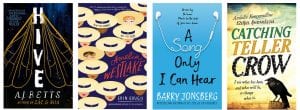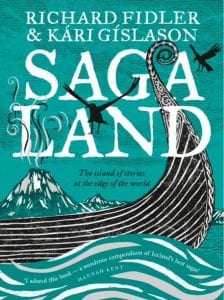 Can you remember a time without Google? Older readers will remember when research could only be done using books and/or accessing a library. Times before you could easily find out the answer to a puzzling trivia question or idea, by tapping it into your smartphone or tablet… Times when information wasn’t so instantaneously* available (though now I can check the spelling of that word*). It really wasn’t that long ago – but it did involve quite an extensive process to get where we are now in the Information Age.
Can you remember a time without Google? Older readers will remember when research could only be done using books and/or accessing a library. Times before you could easily find out the answer to a puzzling trivia question or idea, by tapping it into your smartphone or tablet… Times when information wasn’t so instantaneously* available (though now I can check the spelling of that word*). It really wasn’t that long ago – but it did involve quite an extensive process to get where we are now in the Information Age.
Thanks to the determination and efforts of Larry Page and Sergey Brin, two Stanford University students, we now have a multinational technology company which has changed the way many of us now research – for both facts and fun.
Google It has the subtitles ‘A history of Google’ and ‘How two students’ mission to organize the internet changed the world’. And in its 230 pages, you will find details of:
How Larry and Sergey first met (and how didn’t really get on at first)
What they ultimately had in common
The initial project which started it all
The primitive beginnings of Google
What it took to get things going
And the transformations of the Google juggernaut over the years.
The book is written in an easy-going language, with inserts here and there to explain ideas and details (like footnotes and callout illustrations). Some of these inserts are interesting, but can also be a little distracting. However, the Google story is easily absorbed.
There are reminders of how we used to do things, and how we do things now:
Imagine this: you get into a car for a road trip . You’ve got your playlist, your bestie, some snacks and a book on how to get there. Yes, a book of maps. Printed. Paper. Maps. (From Google It, p. 148)
Now- Google Maps
Regardless of what you think of the Google machine, a great theme flowing through this book is how ideas and sacrifice overcame the necessary failures for its gradual development and success. The importance of these elements show that, for Larry Page and Servey Brin, academic qualifications were less critical than their own intellectual drive and determination. An interesting concept. A story worth reading.
Warning, Google It does present the positive glossy side of Google and its evolution. While I was pleased to see its beginnings were actually rooted in making “the credibility of a web page just as citiation validated research” (p.19), we still need to evaluate Google results, and also have to consider some of the negative impacts of Google.
What do you think? Read it and see.
(My copy was available from BMCC library A Kindle version is also available from Amazon.)
 Catching Teller Crow is an intriguing mystery, told in two voices through poetry and story.
Catching Teller Crow is an intriguing mystery, told in two voices through poetry and story. Planning events these days will involve a playlist – that is, the significant songs that can be used during the event. Special songs for the wedding couple, meaningful songs for a birthday celebration, reminiscent songs for anniversaries. The Spotify generation can relate to this – and plan their playlist.
Planning events these days will involve a playlist – that is, the significant songs that can be used during the event. Special songs for the wedding couple, meaningful songs for a birthday celebration, reminiscent songs for anniversaries. The Spotify generation can relate to this – and plan their playlist.

 ‘Saga Land’ was not what I was expecting – but then, the collaboration between broadcaster, Richard Fidler, and Kari Gislason, a writer and academic born in Iceland starts with multiple but different needs to investigate Icelandic history. So really, you could expect something unexpected.
‘Saga Land’ was not what I was expecting – but then, the collaboration between broadcaster, Richard Fidler, and Kari Gislason, a writer and academic born in Iceland starts with multiple but different needs to investigate Icelandic history. So really, you could expect something unexpected. Should parents’ dreams be lived through the lives of their children?
Should parents’ dreams be lived through the lives of their children?  How much does your past impact your present? Being able to timeslip would certainly provide a bit of information about your heritage, wouldn’t it?
How much does your past impact your present? Being able to timeslip would certainly provide a bit of information about your heritage, wouldn’t it?